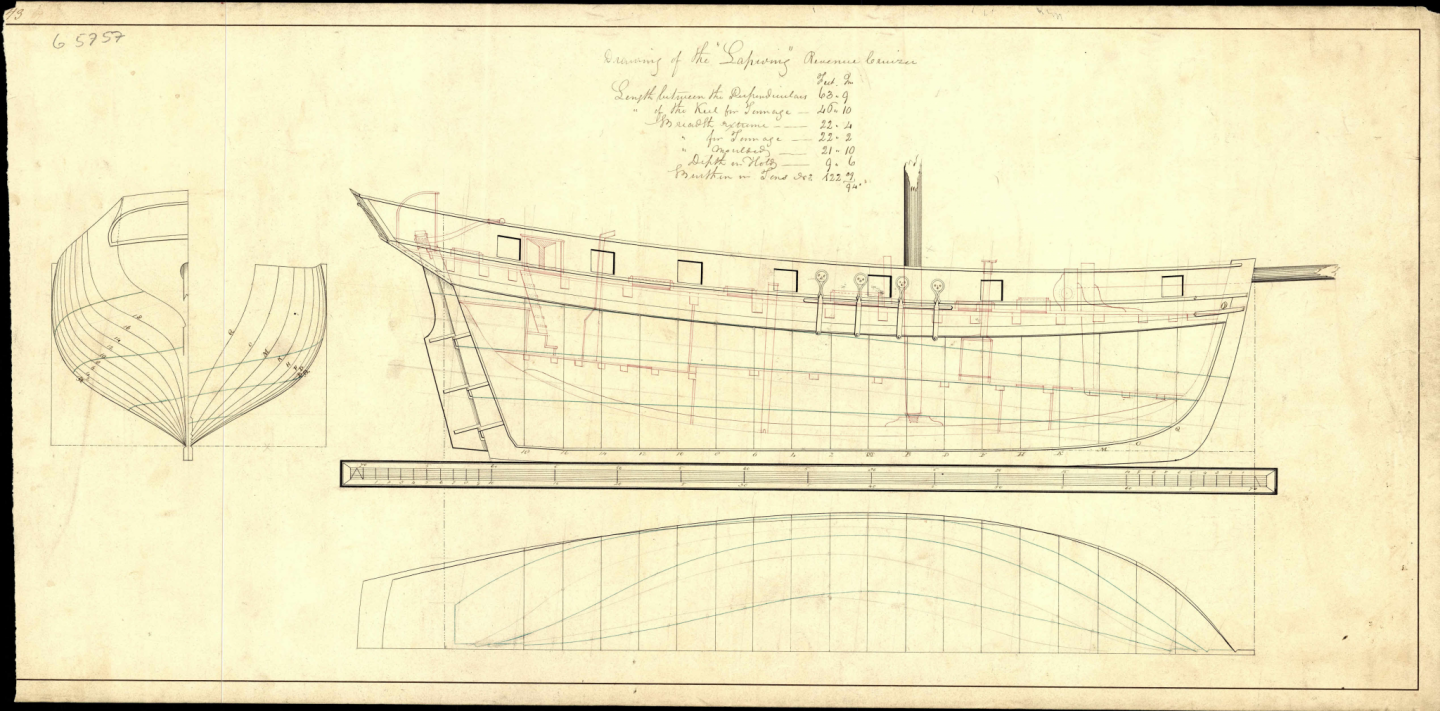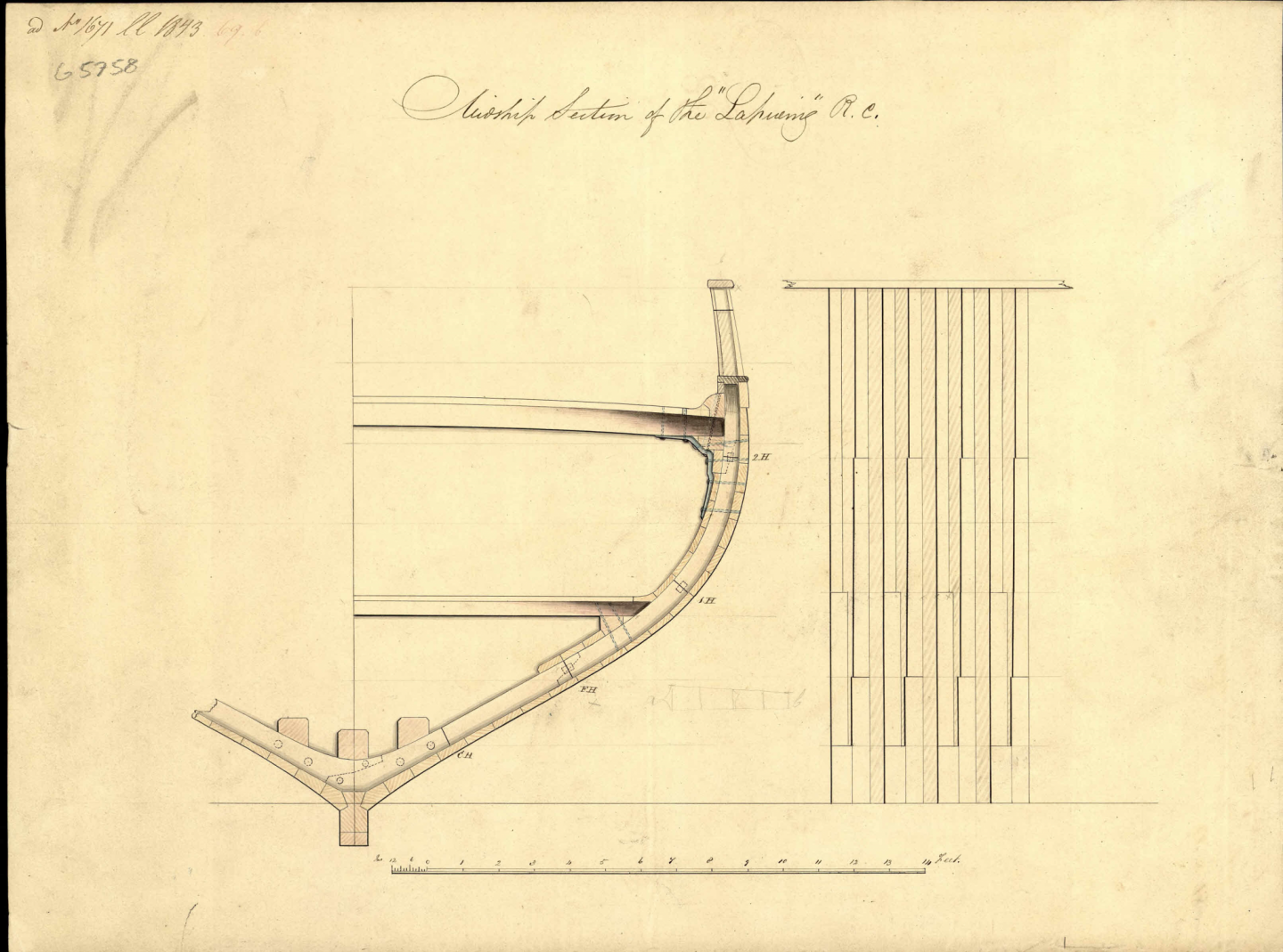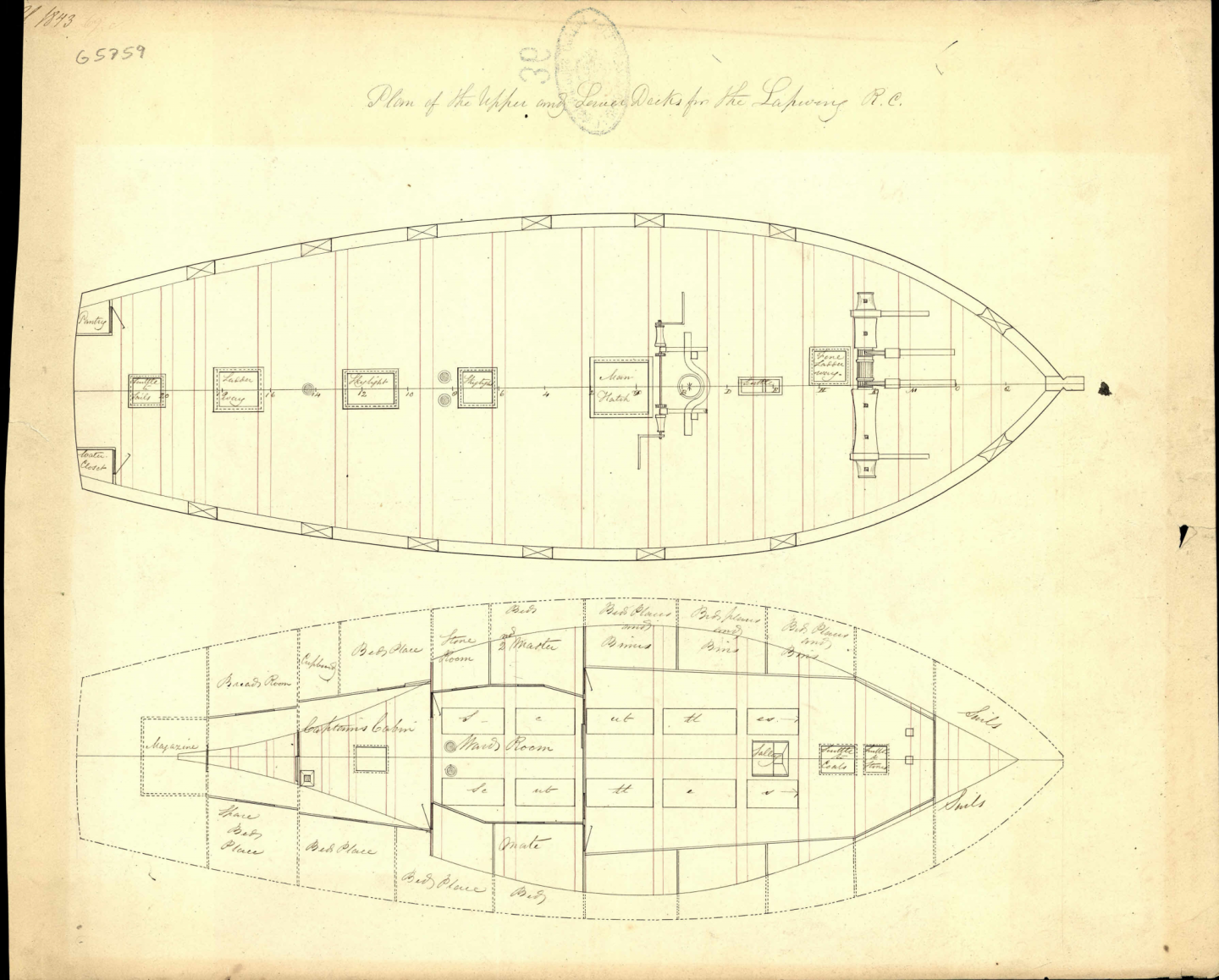-
Posts
3,032 -
Joined
-
Last visited
Content Type
Profiles
Forums
Gallery
Events
Everything posted by bruce d
-
Have you been looking through my windows?
- 1,039 replies
-
- ballahoo
- caldercraft
-
(and 2 more)
Tagged with:
-

Steel wire or hemp rope on Thames sailing barge circa 1940?
bruce d replied to bolin's topic in Masting, rigging and sails
I refer to northern Greece and Bulgaria. During WW1 there was a bidding war between the Central and Allied powers for this product. -

Need CAD type program
bruce d replied to Sambini's topic in CAD and 3D Modelling/Drafting Plans with Software
I do not promise mine will be as beautiful but I am working on it. It has been a while since the lessons were posted and I have started and stopped and started etc but the lessons are always there so I make a little progress. Ab, thanks again, and please say thanks again to Rene. -

Steel wire or hemp rope on Thames sailing barge circa 1940?
bruce d replied to bolin's topic in Masting, rigging and sails
I am pretty sure the 'Any Old Iron' metal collection in the UK which started in 1940 would not have had any impact on a Thames barge in 1940. The government-run process was very comprehensive and started with actual scrap before moving on to harvesting good metal from buildings, signs etc. The benefits of the stages were monitored and observed and one of the most useful aspects of the drive was the way the public perceived it: people grumbled but most were fully committed. Removal of railings and some train station signs had little impact on the real war effort but it kept the public involved and was continued long after it was strictly worthwhile. So, short answer: if the barge had metal rigging at the start of the war then it would not have lost it to a scrap metal drive. It would have retained the metal rigging till it was unservicable. Then it would have been snapped up (and at a good rate). This was in part because the replacement rope rigging was also in great demand. A large part of the Royal Navy rope was traditionally made from Balkan hemp so that wasn't working out well either in 1940. -
Welcome to MSW. That is a lovely model and a good subject. I was in Teignmouth, Devon a year ago and found a pub named after the boat. I was curious to know the history of an English pub named after a French boat, so did some digging. The link is very slim: The pub building is a conversion of a closed supermarket. A few small businesses were demolished on the site where the supermarket was built in the 1970's. One of the businesses was a small factory. One of the women who worked in the factory was married to a man who had crewed on the Jolie Brise. That was good enough for Weatherspoons to name the pub after the boat! I will watch your progress, the carving is impressive. Regards, Bruce
- 15 replies
-
- jolie brise
- pilot
-
(and 1 more)
Tagged with:
-
... and I expect Their Lordships had an opinion on a captian taking the day off to go fishing with his officers.
-
Captain Hook, I am deeply impressed. Well done!!
- 231 replies
-
- model shipways
- armed virginia sloop
-
(and 1 more)
Tagged with:
-

1931 Cadillac by CDW - FINISHED - JoHan - 1:25 Scale - PLASTIC
bruce d replied to CDW's topic in Non-ship/categorised builds
Great subject, and a brave choice by Jo-han in the sixties when hot-rods and dragsters were what modellers wanted. I built one 'way back then' and painted it black with red seats. I loved the look but really wished the wheels looked better. Then I saw a masterpiece in a local model competition. It was finished in pearl white, had a cream tan simulated leather interior and oh-my-how-did-he-do-that wire wheels and brake cables: I was amazed. Also amazing was that this piece of art placed 4th to (1) a T-bucket, (2) an AA Altered and (3) another AA Altered. The winning T-bucket had full scale metalflake paint. On one of the altereds the exposed inside parts of the body were unpainted. This was the beginning of my lifelong scepticism about all judges being impartial. I will watch your Caddie with a smile. -
Hello Crow and welcome to MSW. There are a few half-hull models in the forums, you might want to check out the excellent Half-Hull Planking project, a planking tutorial put together by tlevine. Search 'half hull' in this forum: https://modelshipworld.com/forum/10-build-logs-for-ship-model-kits/ ... and you will see there are a few build logs of the project. Whatever you decide to model, this is a good place to hang out.
-
Hello and welcome to MSW. Sounds like a good choice, it was one of the kits suggested when I started sniffing around. Enjoy it, that is the only rule.
-
Hello, and a warm welcome to MSW from Sussex. It is a great place.
-

Mini Lathe recommendations?
bruce d replied to jfinan's topic in Modeling tools and Workshop Equipment
Got one. PM me? -

Miniature Desk-Top Laser-Cutter
bruce d replied to wefalck's topic in Modeling tools and Workshop Equipment
On reflection, I see this process can be even more simple than I originally thought. In the past for conventional etching processes I had to bring together images and metallic components in perfect registration. To do this I had to juggle photographic material and photosensative coated metal sheets. You do not have these same materials so you do not have the same issues. If your software can produce mirror images that can then be repositioned to allign the 'X' registration marks, it will be possible to make a more simple fixture to position the workpiece for plotting. If you are going to proceed let me know. If the software can't do that trick then it is back to 'eyeball Mk 1' registration techniques. -

Miniature Desk-Top Laser-Cutter
bruce d replied to wefalck's topic in Modeling tools and Workshop Equipment
In my time as an etcher, when dinosaurs roamed the earth, one of the first registration systems I used was very much like we discussed above. The key to success was that all pieces in the system were consistent: any workpiece would fit the jig and anything registered on the jig would align with any other piece even when flipped over. This worked despite having the added complication of using photographic film that had emulsion on only one side and the final images had to end up emulsion-to-emulsion. I can see your idea working in practice. The starting point, from which you proceed with all possible accuracy, is to see if your software generates a consistent image. In other words, if you make a template to use for etching masks, will it work every time? If it will, then put some 'X' marks at the same point in each corner. Each piece of brass must have holes of a consistent size to correspond with the 'X's, again only possible with a jig. Your jig to hold the workpiece in the printer will have pegs in these same locations and must have some way of being located repeatedly in the printer. The last step in repeatability is not an obvious one but must be considered. The material to be etched must be flat or distortions will creep in. Even a small curl at the edge can prevent a piece from sitting properly in the jig(s) and make a mess of all the work put into getting good registration. For the mask material, I believe you will be able to simply use a can of spray paint. By the way, you have got me thinking and I will be interested in how you get on if you try this. Maybe I will follow your path ... ? You go first, I will make a cup of tea and watch. -

Miniature Desk-Top Laser-Cutter
bruce d replied to wefalck's topic in Modeling tools and Workshop Equipment
Why not? One of the many different processes used commercially to create masks was to apply a vinyl sheet and cut away pieces with a blade in a plotter: exactly like modern vinyl sign-writers. As for registration, if you have the ability to make a jig and produce holes with dead-accurate spacing, you can do one side of the workpiece and then flip it and the other side will be in perfect register. This is also based on an old commercial etching practice for small workshops like jewellers. Of course the laser cutter must have good repeatablity but I assume this is not a problem. -
And another welcome from the same island.
-

Lapwing 1816 Revenue Cutter
bruce d replied to iMustBeCrazy's topic in CAD and 3D Modelling/Drafting Plans with Software
I feel like I should know but I don't. I'm pretty sure the Danes and the British kissed and made up formally not long after the fall of Napoleon but I can't name the treaty. There are a lot of English drawings in the Dansk archives and the indications are that the exchange of information was extensive. It is very telling that the Dansk collection includes several early 19th century studies of English ships based on models on display in England, I believe the phrase used was something like 'copied from Admiralty model on display'. The Danes were poorly served by their alliance with Napoleon. Their involvement cut off England's supply of essential ship-building wood (for masts and yards) from the Baltic. The French were unable to help when the Royal Navy reacted. -

Lapwing 1816 Revenue Cutter
bruce d replied to iMustBeCrazy's topic in CAD and 3D Modelling/Drafting Plans with Software
This is also from Dansk Archive. None of the text entries are help[ful for these drawings, no dates or further details. I have seen the '1843' date on other drawings and it is possible that is a date when plans were transferred or re-named, not when the drawing was made. HTH -

Lapwing 1816 Revenue Cutter
bruce d replied to iMustBeCrazy's topic in CAD and 3D Modelling/Drafting Plans with Software
Top left hand corner of first drawing has a note '1843' -

Lapwing 1816 Revenue Cutter
bruce d replied to iMustBeCrazy's topic in CAD and 3D Modelling/Drafting Plans with Software
-

Brass plaque etching
bruce d replied to Murcia 66's topic in Metal Work, Soldering and Metal Fittings
The plaques look good, nice crisp edges to the etched letters. Maybe it is just the photos but they look like they might be copper. Copper etches very well with ferric chloride. Good job!
About us
Modelshipworld - Advancing Ship Modeling through Research
SSL Secured
Your security is important for us so this Website is SSL-Secured
NRG Mailing Address
Nautical Research Guild
237 South Lincoln Street
Westmont IL, 60559-1917
Model Ship World ® and the MSW logo are Registered Trademarks, and belong to the Nautical Research Guild (United States Patent and Trademark Office: No. 6,929,264 & No. 6,929,274, registered Dec. 20, 2022)
Helpful Links
About the NRG
If you enjoy building ship models that are historically accurate as well as beautiful, then The Nautical Research Guild (NRG) is just right for you.
The Guild is a non-profit educational organization whose mission is to “Advance Ship Modeling Through Research”. We provide support to our members in their efforts to raise the quality of their model ships.
The Nautical Research Guild has published our world-renowned quarterly magazine, The Nautical Research Journal, since 1955. The pages of the Journal are full of articles by accomplished ship modelers who show you how they create those exquisite details on their models, and by maritime historians who show you the correct details to build. The Journal is available in both print and digital editions. Go to the NRG web site (www.thenrg.org) to download a complimentary digital copy of the Journal. The NRG also publishes plan sets, books and compilations of back issues of the Journal and the former Ships in Scale and Model Ship Builder magazines.




